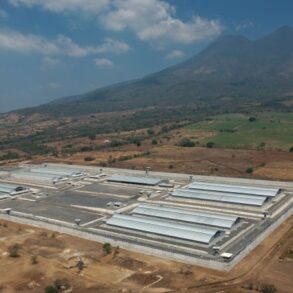
An anonymous reader quotes a report from The Verge:
On the outskirts of the small town of Folschviller in eastern France stand three nondescript sheds. One of these temporary structures has recently become a hive of activity due to a continuous stream of visitors, including scientists, journalists, and the public. The shed sits above a borehole first drilled in 2006 and houses a gas measurement system called SysMoG, which was originally developed to determine the underground methane concentration. While the device did detect almost pure methane (99 percent) at a depth of 650 meters, probing further down, the borehole resulted in an unexpected and surprising discovery: hydrogen in high concentration. “At 1,100 meters, the concentration of dissolved hydrogen is 14 percent. At 3,000 meters, the estimated concentration could be as high as 90 percent,” Jacques Pironon, director of research at GeoRessources lab at the University de Lorraine, said. Based on the estimates of methane resources and the concentration of hydrogen detected so far, scientists have conjectured that the Lorraine region in eastern France, of which Folschviller is a part, could contain 46 million tons of white — or naturally produced — hydrogen. That would make it one of the world’s largest known hydrogen deposits.
This remarkable discovery was not the objective of the project, called Regalor. Instead, it aimed to determine the feasibility of methane production in the Lorraine region and to record the presence of traces of other gases. “Our original research was related to the study of carboniferous sediments in northeast France. This was important as Lorraine was one of France’s largest coal-producing regions,” Pironon said. […] Soon, the researchers will start taking measurements in three other boreholes at similar depths to understand if the hydrogen concentration remains high as you move laterally from the site of the original borehole. “If the concentration is similar, the next step, which is being discussed with the authorities, would be to drill a hole 3,000 meters deep to validate the evolution of the hydrogen concentration with depth,” he said. The deeper borehole could also throw up another surprise. “Besides knowing the level of hydrogen concentration, we will also know if hydrogen is present in dissolved form or in gaseous state at these depths,” Pironon said.
This study could also shed light on the source of this hydrogen. According to Pironon, there are two hypotheses, one of which is related to the presence of the mineral siderite. “Hydrogen could be produced by the reaction between water and siderite, which is made of iron carbonates. We consider that the siderite could be oxidized by water molecules to produce hydrogen. The oxygen then combines with iron to produce iron oxide.” According to Pironon, the other hypothesis relates its presence to the chemical processes that form coal, which, along with the release of methane, can also produce hydrogen.
This post was originally published on this site be sure to check out more of their content.




